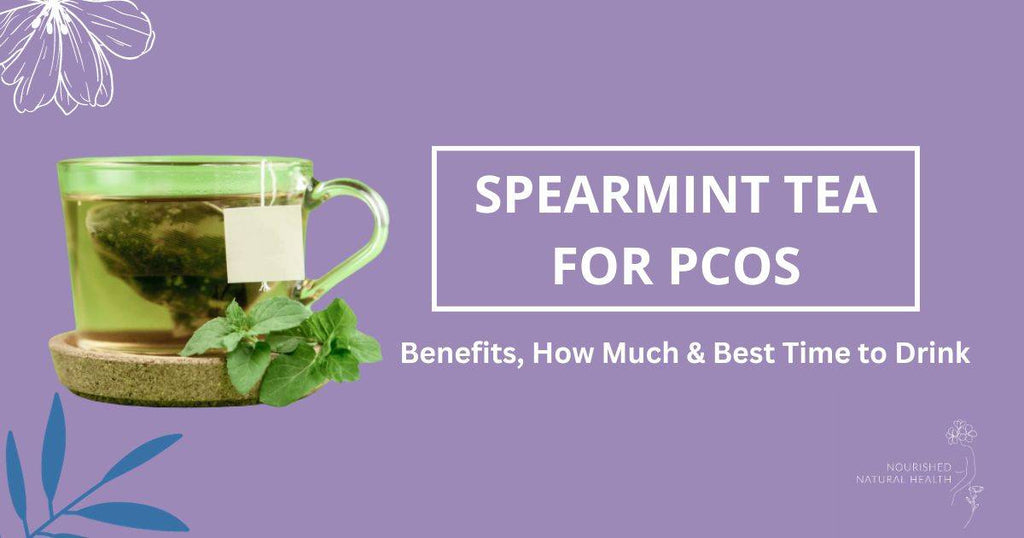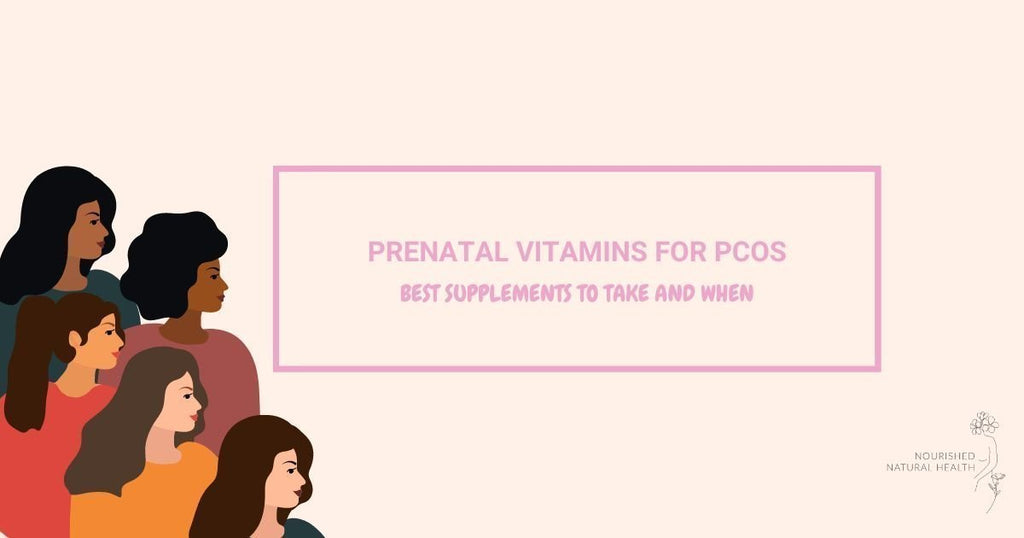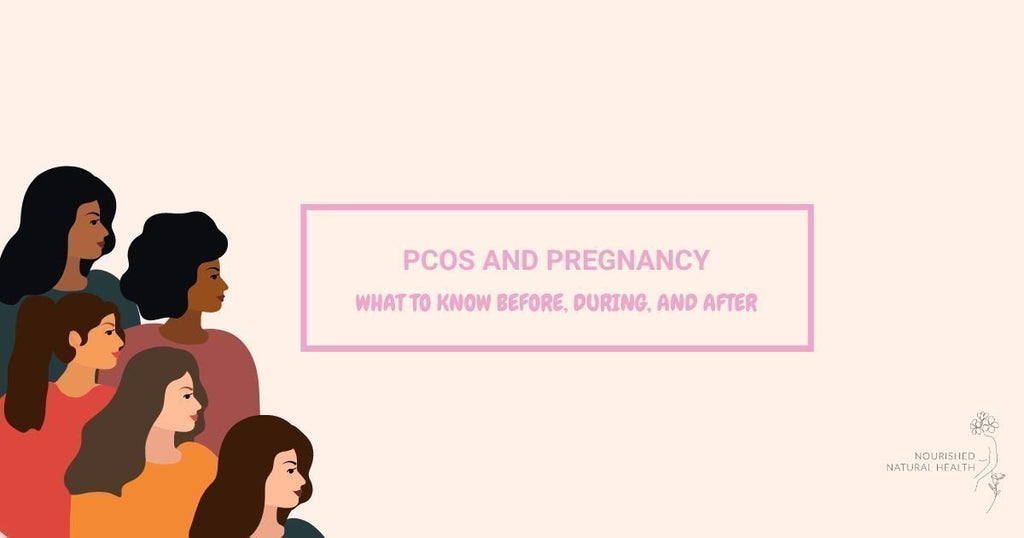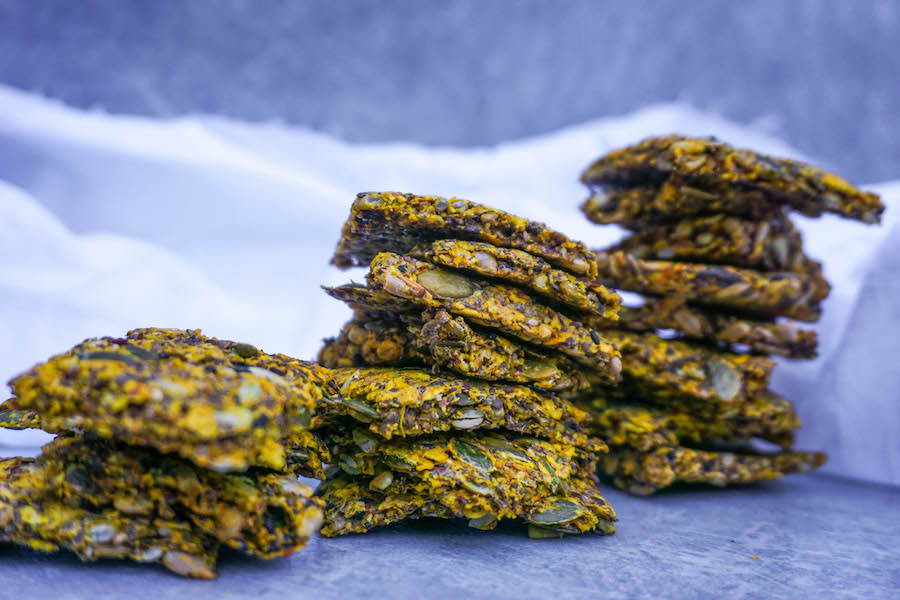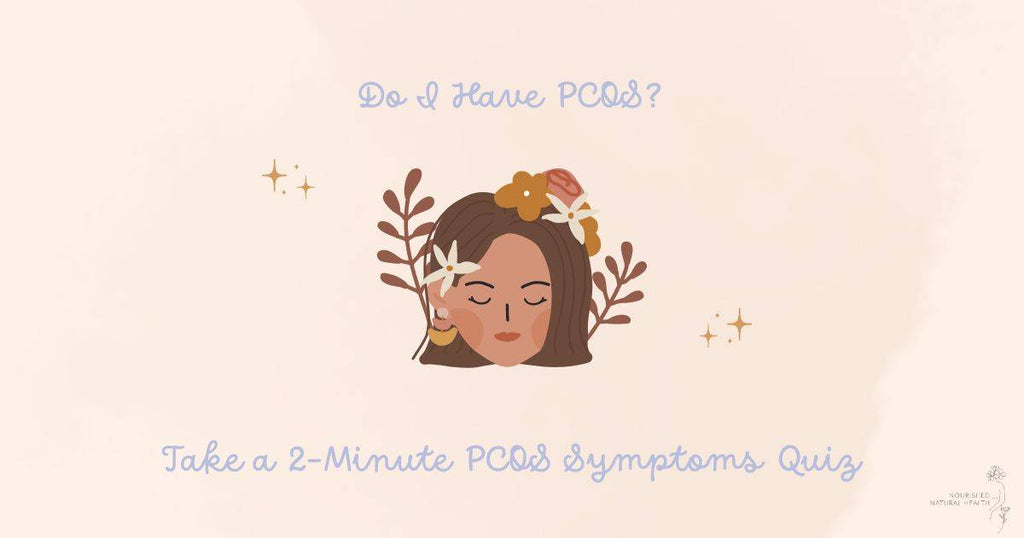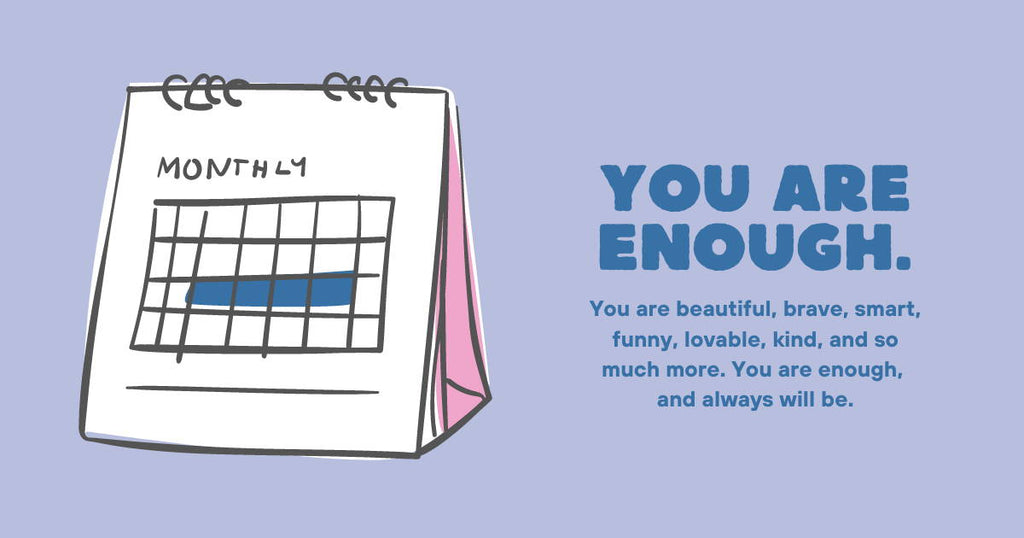There are many reasons why your period may stop and then start again, and most of them are completely harmless and nothing to worry about. The most common causes are hormonal imbalances (like estrgoen excess), a tilted or flexed tuerus, liver qi stagnation, emotional blockages and endometrial tissue blocking your cervix.
My Period Stops Then Starts Again Hours to Days Later: What's Going On?

In This Article
Period stops then starts again
Periods that stop, then start, then stop again are actually really common.
When this happens, it can be very confusing and scary, but most of the time it’s nothing to worry about.
“Why does my period stop then start again?” is one of my most commonly asked period questions, so I thought it was about time to shed some light on some of the many reasons why this may be happening.
How long should your period be?
A healthy period lasts anywhere from 3-7 days.
Generally, the first 2 days of your cycle will be the heaviest and require more frequent pad/tampon/menstrual cup changes.
After day 2, in most women, bleeding slows down and tapers off over the next few days.
What does a 2-day period mean?
Bleeding for less than 3 days can be normal for some women, particularly if you have always had periods that lasted 2 days.
If however, you have had a change from longer periods to shorter bleeds, it can be a sign of a hormonal imbalance.
Most commonly this change in period length is contributed to a decline in estrogen - the hormone responsible for building up the lining of our uterus which is shed at menstruation.
Lower levels of estrogen mean that your body struggles to build a thick, healthy lining in preparation for a potential implantation of an embryo if you were to fall pregnant that cycle.
Shorter, lighter periods are often accompanied by a change in period colour from bright red to a light pink, watery period.
Find out more about what your period colour and flow is telling you about your hormones in this post.
Why does my period end and then start again?
In some women, their period will start like normal, only to stop completely for a day or two, and then resume again, sometimes with a heavy flow.
Why could this be happening?
There are several reasons why your period can stop, start, then stop again.
If your period is lasting for the normal length (between 3 to 7 days), but you are experiencing a day or two in the middle with no bleeding, here are the main causes:
1. Endometrial tissue blocking the opening of the cervix
When you bleed on your period, the lining of your uterus is broken down and shed through a tiny opening of your cervix, down the vaginal canal and out of your vagina.
Your period consists of a mix of blood and endometrial tissue. The opening in your cervix is small, which means that small pieces of endometrial tissue can block this opening, causing a temporary blockage of flow.
When this happens, your period may stop for several hours or a day or two.
Once the blockage is removed, your period will resume again. This can mean that you experience a heavier than normal flow for the first day after bleeding resumes, due to a buildup of blood waiting to be released.
If a small piece of tissue blocking the cervix is the cause behind your period stopping and starting again, this is generally nothing to worry about. This is frequently the cause of a one-off stop-and-start period.
2. Your uterus may be ‘tipped’ or ‘flexed’
According to Maya Abdominal Massage Therapists, it is very common for women to have ‘tipped’ uteruses - or a uterus that is in a flexed position.
Why your uterus is not in the correct position, it can be more difficult for the menstrual blood to flow freely out of the uterus. This could cause your period to start, and then the flow being stuck for several hours or days.
Maya Abdominal Massage is an ancient technique of massaging the pelvic organs which is said to improve their positioning, increase blood and lymph flow by encouraging the uterus to return to its correct position.
3. Liver qi stagnation
Traditional Chinese Medicine practitioners often view periods that on and off period as an indication of stagnation of energy flow (qi) in the body.
This can be a physical stagnation of energy (i.e. stagnation of the blood moving out of the uterus), emotional stagnation (i.e. holding on to frustration, anger or sadness), or both.
Visiting a reputable acupuncturist or Traditional Chinese Medicine practitioner can help to remove the stagnation in this area.
If you are based in Sydney, Australia, I highly recommend my friend and colleague Isabella who practices both Maya abdominal massage and fertility acupuncture.
4. Emotional stagnation
While it may seem woo-woo to some, we all know how powerful our brain is on influencing our health (think of the placebo effect or how worrying can cause your stomach to hurt).
Many women have an emotional connection with their menstrual cycles.
When we are feeling stuck, not in the flow or stagnating in areas of our life, this can show up in a physical form in our bleeding patterns.
Experience painful periods or a heavy flow?
It’s likely that your body is feeling tense as you ride the waves of cramps.
Holding on or tensing your body can also restrict the flow of blood out of your uterus.
If you can relate to this scenario, or the feeling of being ‘stuck’ emotionally, it can be helpful to focus on deep breathing, relaxing your pelvis and ‘letting go’ during your period.
I have found menstrual meditations to be of tremendous help during particularly painful periods or when I feel I have something emotional that I need to clear during my bleed.
There are several menstrual meditations on my favourite free app Insight Timer, or try searching YouTube for free guided meditations designed for your menstrual cycle.
Another technique I have found incredibly helpful for myself and my clients is taking a slow walk on the first day or two of your cycle while focusing on deep belly breaths and repeating the phrase “I release all that no longer serves me” in your head.
It can help to visualise the blood moving out of your body and carrying with it any emotions or experiences from the previous month that you would like to let go of.
5. Hormonal imbalances
In a normal menstrual cycle, the first day of your bleed correlates with a sharp decline in all of your sex hormone levels (estrogen, progesterone and testosterone).
These hormone levels remain low for the first few days of your bleed.
Around days 4 or 5 of your cycle, your body begins to increase levels of follicle-stimulating hormone (FSH). This stimulates several eggs to begin maturing in your ovaries in preparation for ovulation in the middle of your cycle where one dominant egg will be released.
As these eggs begin developing, your body begins to produce increasing amounts of estrogen which triggers your period to stop, and your uterus to begin building up another healthy lining in preparation for potential embryo implantation.
In some women, estrogen levels are too high in this first phase of the cycle.
This can cause bleeding to stop too early in the cycle when there is still menstrual blood to be shed resulting in some females who may have bled for an hour then stopped with a period that starts and stops the same day.
Excess estrogen commonly presents as increased period cramps, heavy, clotted periods and PMS symptoms before your bleed.
Wondering if you have a hormonal imbalance that is contributing to your stop-start-stop period?
Take my free 3-minute hormone balance quiz to find out if your symptoms indicate a hormone imbalance, plus get access to my free personalised guide to healing your individual imbalance naturally.
6. Mid-cycle spotting
If your period has stopped for several days (more than 3 or 4 days) and you experience light spotting, you are likely experiencing something different to your period.
This type of bleeding is known as mid-cycle spotting and can be related to ovulation, lower levels of progesterone, or birth control use. For some women, spotting at the time of ovulation is common and harmless.
If you are tracking your cycle and notice a very small amount of spotting at the time of ovulation, this can be caused by the rupture of your follicle as your egg is released.
This type of spotting will generally last for a short time and will not be seen again until you start your period.
If you are currently taking a form of hormonal birth control (such as the pill, contraceptive patch or implant), spotting can occur during your cycle related to changes in hormone levels from your birth control.
Devices like an intrauterine device (IUD) can commonly cause spotting in the first few months after having it inserted. If this bleeding continues, visit your primary health care provider for advice.
Spotting, particularly later in the cycle in the week before your period is due, is commonly caused by low levels of progesterone. In a healthy cycle, progesterone is secreted in high amounts after ovulation.
Its main role is to maintain the lining of the uterus that has been built up by estrogen in the first half of the cycle, in order for an embryo to safely implant if you are to become pregnant.
If your egg is not fertilised, progesterone levels sharply decline after around 10-14 days, causing your period to start.
When levels of progesterone are too low during the cycle, the lining of your uterus can start to slip away too early, causing spotting before your period starts.
Wondering if you might have low progesterone? Take my free quiz to find out and get access to my personalised guide to healing low progesterone naturally.
If you notice any mid-cycle bleeding that is not related to your period, or you are currently pregnant, it’s best to visit your primary health care provider for a check up as this type of bleeding can indicate more serious issues going on.
How do I fix my on and off period?
The cause of your stop-start period will determine the best treatment to restore a normal bleed. Below are some suggestions for a healthy period to try:
- Restore blood flow to the pelvic area: in the days leading up to your period and once you start bleeding, use a hot water bottle over your pelvis to encourage healthy blood flow (heat during your bleed is also great for reducing menstrual cramps!)
- Consider seeking out a Maya Abdominal Massage Therapist, Traditional Chinese Medicine practitioner or acupuncturist
- Explore potential hormone imbalances and correct them naturally through diet changes and supplements (find out more about how to balance hormones naturally and take my free hormone balance quiz here)
- Explore your emotional connection to your cycle. Is there anything you are holding on to that you need to let go of? Menstruation is the perfect time to go inwards and reflect on the previous month. What worked for you? What didn’t? Where would you like to focus your energy in the upcoming month? Learn more about living in sync with the seasons of your cycle in this guest blog I wrote on Nicole Jardim’s website
When to seek help
Period stopping and starting FAQ’s
1.Why Did My Period Stop After One Day/Why Did My Period Stop Suddenly?
This can cause bleeding to stop too early in the cycle when there is still menstrual blood to be shed resulting in some females who may have bled for an hour then stopped with a period that starts and stops the same day.
2. Am I Pregnant? My Period Started Then Stopped?
It is always possible!
If you are noticing your period starts and stops the same day, it could be a sign of a hormone imbalance.
Take my free 3-minute hormone balance quiz.
3. Why Is My Period Heavy Then Light Then Heavy Again?
In some cases, this can be completely normal however, in many cases having a period that starts heavy then goes light and heavy again is a sign of a hormonal imbalance (most commonly estrogen excess) or a sign of endometrial tissue blocking the cervix.
In my free online masterclass, I give you insight into common hormone imbalances and how to fix these.
4.What Does It Mean When Your Period Stops Early?
Bleeding for less than 3 days can be normal for some women, particularly if you have always had periods that lasted 2 days.
If however, you have had a change from longer periods to shorter bleeds, it can be a sign of a hormonal imbalance.
Most commonly this change in period length is contributed to a decline in estrogen - the hormone responsible for building up the lining of our uterus which is shed at menstruation.
Lower levels of estrogen mean that your body struggles to build a thick, healthy lining in preparation for the potential implantation of an embryo if you were to fall pregnant that cycle.
Now it’s your turn!
TLDR (Too Long Didn’t Read) - Period Stopped then Started again FAQs:
Why Does My Period Stop, Then Start Again?
Why Does My Period Stop, Then Start Again?
Some simple solutions to try are: 1. Using heat packs on your abdomen in the days before and during your period to encourage blood flow. 2. Maya Abdominal Massage to encourage proper alignment of the uterus. 3. Explore your emotional connection to your cycle (i.e. where in your life are things not flowing?). 4. Explore hormone imbalances - changes to your period blood flow are commonly caused by excess estrogen and/or low progesterone.
Is A Period That Stops And Starts Again Dangerous?
In most cases, a period that stops and starts again is harmless and nothing to worry about. If you notice any other changes to your cycle (e.g. increased pain, heavier bleeding or spotting outside of your menstrual window), it's best to visit your primary health care provider for a check up to rule out anything more sinister going on.
How Do You Balance Estrogen Levels?
Estrogen levels can be balanced by supporting your natural estrogen detoxification pathways. A simple trick is to enjoy 1 cup of cooked cruciferious vegetables every day (like kale, cauliflower, cabbage and Brussels sprouts) to help support your liver to clear excess estrogen.
How Do You Check Your Hormone Levels?
Hormone levels can be checked in a number of ways. You can take my free hormone imbalance quiz to get an idea of your most likely imbalance and received a personalised report with tips to get started straight away in addressing your imbalance. If you would like more in depth information, you can visit your health care provider to request a blood test which will look at your levels of your female reproductive hormones (estradiol, progesterone, testosterone, FSH and LH). This will give you a baseline for where your hormones were on that particular day. If you’d like to go even deeper, I suggest talking to a natural health care practitioner about ordering a D.U.T.C.H test (dried urine test for comprehensive hormones) which provides much more in-depth information about the individual metabolites of each of these hormones mentioned above (i.e. it tells you how well your body is breaking them down). This helps you to hone in on where your body may need individual support.
How Do You Fix Hormonal Imbalance?
Fixing a hormonal imbalance involves addressing your diet, lifestyle, liver detoxification, digestive health and emotional wellbeing, as well as addressing any individual hormonal imbalances that need to be corrected. Applying the foundations first (like eating a hormone-balancing diet, taking care of your stress levels, engaging in gentle, regular exercise and getting enough rest) might not sound like important steps, but without this groundwork in place, it’s unlikely you will be able to truly address the root cause of your issues and prevent them from coming back.
About The Author - Tamika Woods


